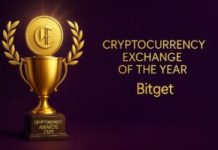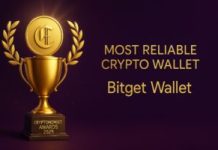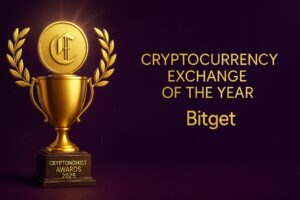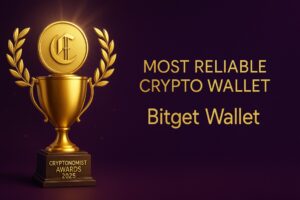The blockchain world is all about decentralization and connection, but in practice, it’s not seamless. Many networks are isolated and interacting between them is complex and inefficient.
Cross-chain token swaps, the backbone of decentralized finance (DeFi), run into issues like high fees, slow processes, and security risks. Mynth, a decentralized cross-chain protocol, is here to fix that. Its goal is to simplify token swaps across blockchains, think of it like SWIFT in traditional finance.
Mynth’s goal is simple: to let users swap tokens on any blockchain without barriers. By removing the silos between networks, it wants to make decentralized finance more user-friendly and accessible. At its core Mynth operates on layer zero infrastructure, connecting blockchain ecosystems at the most fundamental level.
The rapid growth of blockchain adoption has brought both opportunities and challenges. More users and developers are embracing this technology, but the fragmentation between networks is a big hurdle. Moving assets from one chain to another often involves centralized exchanges, which are slow, expensive, and prone to security breaches. This fragmentation limits the broader potential of blockchain technology.
How Mynth Works
Mynth’s solution is a decentralized protocol that eliminates the need for intermediaries. By doing so, it provides a way for users to execute token swaps securely and efficiently across networks. This creates a more unified blockchain environment where interactions between chains are smooth and reliable.
Robert Roose, founder of the decentralized token swap service Mynth, described it as a critical tool for enhancing blockchain interoperability.
“Mynth acts as a ‘glue’ that enables blockchains to communicate with one another, something they inherently lack,” he explained. “It facilitates the exchange of messages and the transfer of assets between different networks, such as enabling communication between Solana and Polygon.”
Roose added, “By providing this capability, Mynth essentially gives blockchains a ‘voice,’ allowing them to interact seamlessly across ecosystems.”
The protocol uses several key technologies to make this happen. Users start by locking their tokens into smart contracts on one blockchain. These contracts act as a secure holding place during the transaction. A big part of the process is Mynth’s “Lizard” network which monitors external events, validates them, and submits proofs on-chain. Once verified the original funds are released, and the swap is trustless and efficient.
Roose also likened Mynth to SWIFT, noting how both connect fragmented systems—SWIFT for traditional banking and Mynth for the emerging blockchain ecosystem.
“Just as SWIFT enables money transfers between banks and countries, Mynth creates a framework for communication and asset transfer between modern blockchain networks,” he explained.
Roose also brought attention to the fact that Mynth is fully decentralized and secure, unlike systems that rely on centralized intermediaries like Coinbase. He pointed out that Mynth is trustless, meaning users don’t have to depend on third parties to safeguard their assets. Additionally, its open-access approach allows anyone to join and use the network without permission, fostering inclusivity.
𝗬𝗼𝘂𝗿 𝗺𝗼𝗻𝗲𝘆 𝗶𝘀𝗻’𝘁 𝗿𝗲𝗮𝗹𝗹𝘆 𝘆𝗼𝘂𝗿𝘀
In today’s financial system, moving your own money across borders isn’t as simple as it should be. Banks demand explanations, approvals, and compliance with their rules before you can send funds. Even after all that, you’re… pic.twitter.com/cNuRgwvOaS
— Mynth (@_mynth_) January 16, 2025
Instead of introducing new consensus mechanisms that could create vulnerabilities, Mynth builds on existing blockchain technologies to ensure reliability and security. This approach, Roose noted, avoids the pitfalls seen in other systems that have led to monetary losses due to poor implementations.
Mynth’s native token MNT is at the heart of the ecosystem. The token is used for staking, governance, and network security. MNT holders can participate in decision making for the protocol and benefit from a system where protocol fees fund a buyback and burn mechanism. This reduces the token supply over time and potentially supports the long-term value of the token.
Partnerships are a big part of Mynth’s strategy. The protocol has already integrated with major blockchains like Ethereum, Binance Smart Chain, Cardano and Solana and extends its functionality across multiple chains. Partnerships with EMURGO and Immutable also helps to address different use cases and build trust in the blockchain community.
Future Plans and Outlook
A key moment for Mynth is its upcoming Initial DEX Offering (IDO), scheduled for January 21, 2025. This event will allow users to acquire MNT tokens across four launchpads: Axo, Fjord, GemPad, and PinkSale. The tokens can be purchased using six native coins or USDC.
Robert Roose spoke on the significance of Mynth’s Initial DEX Offering (IDO) as a milestone for both the project and its growing community.
“The IDO marks the first broad opportunity for users to purchase Mynth’s utility token in meaningful quantities,” he explained. “Previously, access was limited to an airdrop during our mainnet launch in 2023, with only small liquidity pools set up by the community.”
Roose continued, explaining that the IDO transitions Mynth from a private beta phase to open access, enabling participation across nine different blockchains. “Following the IDO, Mynth will showcase its cross-chain communication capabilities, allowing users to move tokens seamlessly between networks. This will not only highlight its ease of use but also open opportunities for arbitrage,” he said.
He also mentioned how the IDO helps their overall goals, adding, “The event underscores our mission of ‘any token to any token, on any network,’ broadening accessibility and showcasing the system’s utility. For the community, it represents a shift from exclusivity to global participation, creating opportunities for users worldwide.”
The funds raised during the IDO will go toward creating Protocol-Owned Liquidity (POL) in decentralized exchange pools. These pools will be locked in the Mynth DAO Treasury for 12 months, providing stability while launching at a premium compared to the IDO price.
In the future, Mynth will be expanding to 25 blockchains by the end of 2025. Scalability is key as the protocol is dealing with the growing demand for cross-chain solutions. Predictive analytics is another area of exploration. By using machine learning Mynth will be able to anticipate vulnerabilities and potential threats and make the services more secure and reliable.
The blockchain space has seen many high-profile security incidents from smart contract exploits to rug pulls. These show the need for robust, trustless solutions that balance security and usability. Mynth is tackling these challenges head on by simplifying and securing cross-chain token swaps, the critical function in DeFi.
The comparison to SWIFT – the established network for international bank transfers – is at the heart of Mynth’s identity. The protocol wants to provide a similar reliable and efficient system for blockchain ecosystems. By focusing on interoperability and security Mynth is a tool to solve some of the biggest problems in the industry.
The development of systems that connect blockchain networks is essential for the technology’s future. As blockchain adoption grows, protocols like Mynth will play a crucial role in enabling seamless collaboration and innovation across ecosystems. By addressing technical and logistical barriers, Mynth contributes to building a more cohesive blockchain environment.
Mynth’s emergence highlights the increasing demand for tools that make blockchain technology more practical and secure. As the industry evolves, its ability to adapt and expand will determine its long-term success. With a focus on predictive analytics, security enhancements, and scalability, Mynth is positioning itself to meet the needs of a rapidly changing landscape.
Mynth’s vision for the future of cryptocurrency extends beyond technical innovation to redefining user experience.
“Long-term success means integrating cryptocurrency into daily life so seamlessly that users don’t even realize they’re interacting with blockchain,” Roose explained.
“Users should only see a balance in their app and send or receive money effortlessly, without worrying about the underlying technology. Mynth will handle everything in the background—routing, currency conversions, and network preferences—making blockchain as intuitive and invisible as traditional systems like SWIFT.”
Roose continued, “Our goal is widespread blockchain usage that doesn’t feel like ‘crypto,’ ensuring a seamless and intuitive experience for everyone.”
The challenges of interoperability are big, but protocols like Mynth show how focused innovation can solve real problems. Its work on cross-chain interactions and security lines up with the broader DeFi goals. As blockchain matures Mynth will be a big part of its adoption and use case.
Mynth’s story highlights both the complexities and opportunities of the blockchain industry. By focusing on practical solutions to existing problems, it demonstrates how innovation can drive progress. Its ongoing work to enhance scalability, security, and connectivity is paving the way for a more integrated and resilient decentralized finance ecosystem.









